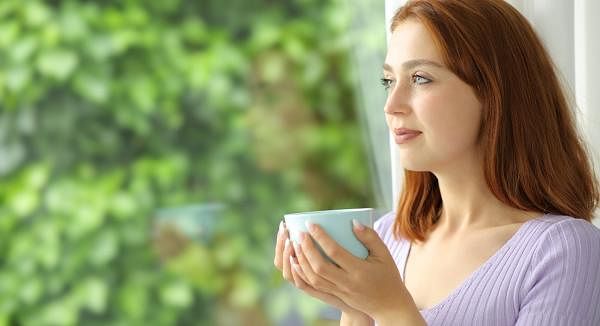Supporting Your Circadian Rhythm
Why you can trust Nutri Advanced Every article on our site is researched thoroughly by our team of highly qualified nutritionists. Find out more about our editorial process.
As nutrition practitioners working with new clients, it can be tempting to immediately dive in and start working on the minute details of someone’s diet. Personal learnings over the last 15 years however have taught me that it’s important to take a step back and consider the bigger building blocks of health; and this is often where the most significant health gains can be made. For example, there’s limited long term value in recommending a digestive enzyme supplement to someone who’s experiencing symptoms of indigestion, yet eating all their meals on the run. Digestive enzymes may provide a helpful short-term crutch in this situation, but the bigger building block needed here centres on helping the client to establish better habits around mealtimes.
In recent years, research into the importance of circadian rhythms for health has accelerated. And living in tune with your body’s natural circadian rhythm is fast becoming considered as one of these bigger building blocks of health. In this article, we take a closer look at circadian rhythms and share some simple tips to help support a natural alignment.
Circadian rhythms
Circadian rhythms are biological processes that every plant, animal and human exhibits over the course of a 24-hour light / dark cycle. These rhythms are governed by internal circadian clocks. Every single one of our cells contains one of these clocks, and each is programmed to turn on or off thousands of genes at different times of the day or night. These rhythms are so fundamental to life that if you moved humans to another planet that had identical conditions as planet earth, but had a day/night cycle other than 24 hours, then we couldn’t easily survive.
Dr Satchin Panda is a leading expert in the field of circadian rhythm research. In his book, The Circadian Code, he writes;
“The clocks in different organs work like an orchestra to create three major rhythms that form the essential foundations of health – sleep, nutrition, and activity. What’s more, these rhythms are entirely inter-related and are also under our control. When they all work perfectly, we have ideal health. When one rhythm is thrown off, the others are ultimately upset, creating a downward spiral of poor health.”
The ‘master clock’
Scientists have identified a small cluster of cells at the hypothalamus at the base of the brain which function as a master clock. Collectively, these cells are called the suprachiasmatic nucleus (SCN). The SCN acts as a link between light and timing – it receives information about light via a light-sensing protein called melanopsin in the retina. This information is then shared with the rest of the body. The SCN is so essential for daily rhythms that if it was surgically removed, all daily rhythms would be lost.
Melanopsin – the ‘light-sensing’ protein
The discovery of the light-sensing protein ‘melanopsin’ in the retina in 2002 has vastly increased understanding on how exposure to light can impact the human circadian clock, our sleep-wake cycles and melatonin production.
When melanopsin is activated by light, this information is shared with the SCN, and tells our bodies it is time to be awake. Conversely, darkness (or dim lighting) means that melanopsin is not activated and instead the SCN receives information that it is time to go to sleep. Interestingly, it takes a lot of light to activate the melanopsin protein, and it is most sensitive to being activated by blue light waves and less sensitive to red light.
It is easy to understand then how modern lifestyles can be so disruptive to our natural sleep-wake cycles. If most of our daytime is spent indoors without exposure to good, strong daylight, and evenings are spent in well-lit homes looking at bright ‘blue-light’ screens, melanopsin may be activated at the wrong times. This can make us feel sleepy during the day, and a reduction of the sleep hormone melatonin at night means that we may struggle to get to sleep.
Food timing is an important circadian cue
As well as blue light sensors that communicate with the SCN, our bodies are also responding to other cues to inform its circadian rhythms. In addition to light exposure, the timing of food is another important cue. And whilst it is the first light of the morning that helps to reset our brain clock, it is the first meal of the day that resets our organ clocks. It seems that our ‘food-processing’ systems work optimally for approximately 8–10 hours from the first bite of the day. And this is where the concept of time-restricted eating (TRE) comes from; the theory being that food is best consumed within an 8–10 hour window each day to keep aligned with this natural rhythm. So for example, if your first meal of the day is at 8am; you would aim to finish your last meal by 6pm.
Physical activity supports a robust circadian clock
In addition to sleep and nutrition, physical exercise is another important cornerstone of health. In fact, we have evolved in such a way that when we are not sleeping or eating, we are built to be active in some way, making use of our many muscle groups. And it will come as no surprise to learn that even muscles have a circadian rhythm and are more efficient during the day than at night. We know that physical activity can deliver immense benefits to health, and scientists are now starting to learn that this may in part be due to the fact that regular activity supports a robust circadian clock. Regular daytime activity is also known to support better sleep.
Finding out more…
The field of circadian rhythm research is fast-evolving, fascinating and vast; and here we have merely scratched the surface. If you’d like to delve deeper, The Circadian Code by Dr Satchin Panda is a great place to start. For now, here’s some useful tips to get you started:
5 Tips to Supporting Circadian Rhythm
Daylight in the morning
Aim to get outdoors for good exposure to daylight as early as possible each day. This is important for activating melanopsin at the optimal time, and reinforcing your body’s natural sleep-wake cycle.
Pay attention to your evening light exposure
Turn off blue-light screens at least 2 hours before bed and keep your home lighting dim during the evening (remember red/orange lighting is best). If you do need to use ‘blue-light’ emitting devices in the evening, turn on the ‘night-time’ mode and consider trying some blue-light blocking glasses.
Make your sleep environment dark
Exposure to light sources during the night can disrupt the body’s sleep cues. Make sure your sleeping environment is as dark as possible.
Consider Time Restricted Eating (TRE)
Pay attention to the timing of your first and last meal of each day. Through the myCircadianclock App, Dr Satchin Panda and his research team have observed that many people who follow a 10hr Time Restricted Eating (TRE) schedule report substantial improvement in their sleep.
Daily physical activity
And finally, remember that regular exercise helps to support a robust circadian clock; you can strengthen this even further if you exercise outdoors in daylight.
Resources:
Dr Satchin Panda The Circadian Code
This website and its content is copyright of Nutri Advanced ©. All rights reserved. See our terms & conditions for more detail.
Nutri Advanced has a thorough research process and for any references included, each source is scrutinised beforehand. We aim to use the highest value source where possible, referencing peer-reviewed journals and official guidelines in the first instance before alternatives. You can learn more about how we ensure our content is accurate at time of publication on our editorial policy.
Most Popular Articles
-
7 Surprising Ways To Support Your Magnesium
If you are displaying signs of a magnesium deficiency, here are 7 ways to boost your magnesium levels that are easy to incorporate into your daily life. -
5 Best Vitamin C Supplements Picked By Our Experts
Learn more about the different types of vitamin C, the different benefits you get from different types, and what you get for spending more on a good supplement. -
Top 5 Vitamins For Energy And Tiredness Picked By Our Experts
The 5 best and most important vitamins for energy & tiredness including B vitamin food sources & best supplement forms for energy. -
Benefits of Myo-Inositol for Polycystic Ovary Syndrome (PCOS)
In this research review article, we take a closer look at a lesser-known natural compound called myo-inositol that has been found to have significant potential to improve many of the prevalent features of PCOS. -
Top 10 Reasons to Give Your Kids Omega-3
Read the top 10 reasons that kids should have plenty of Omega-3- an essential fatty acid- including for depression, brain function, sleep & reading/maths skills.











